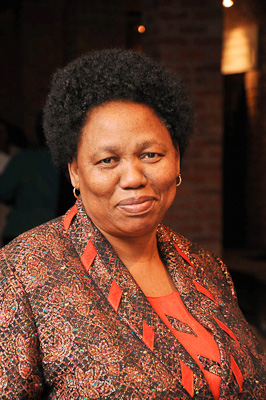 |
| Photo: Stephen Collett |
“We will not know peace and prosperity unless all women are free. We must open opportunities for women and make sure that we achieve the necessary progress. I believe this would be the best way to honour the life of Charlotte Maxeke.”
This rallying call for action was made by the Minister of Basic Education, Ms Angie Motshekga (pictured), in her speech to commemorate the life of Charlotte Maxeke, a woman she described as “a heroine” to all South Africans.
The University of the Free State (UFS), in conjunction with the Free State Premier’s office, presented the annual Charlotte Maxeke Memorial Lecture at the Main Campus in Bloemfontein to once again honour this remarkable African woman as part of celebrating Women’s Month.
“We must ensure that we act consciously to extend equal opportunities, freedom and justice to all women,” she said. “We must put all our energies together in this task of uplifting women and children.”
She said that even though women had made considerable strides since the advent of democracy in South Africa, especially in government, much still had to be done to ensure equal opportunities for all women.
“There’s a 40% women representation in government, but the question we should ask ourselves is: What value does this representation bring to the life of an ordinary woman? What impact does it have on her life?” she asked.
She said women were still less represented in managerial positions. “Sexism requires the same amount of energy that we use to fight against racism,” she said.
She also announced that the government had decided to declare the graves of Charlotte Maxeke, Lillian Ngoyi and Helen Joseph as national heritage sites.
The well-attended lecture was entitled: United in action to make 2010-2020 a decade for women in Africa.
Among those present were members of the ANC Women’s League, who came in buses and mini-buses; Dr Allan Boesak and his wife; past and present Free State MECs; and the Vice-Rector of External Relations at the UFS, Prof. Ezekiel Moraka.
Media Release:
Mangaliso Radebe
Assistant Director: Media Liaison
Tel: 051 401 2828
Cell: 078 460 3320
E-mail: radebemt@ufs.ac.za
6 August 2010